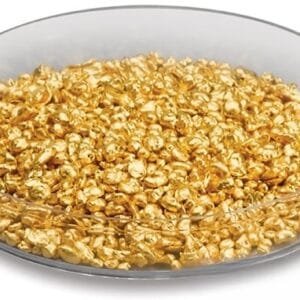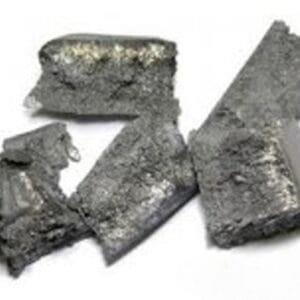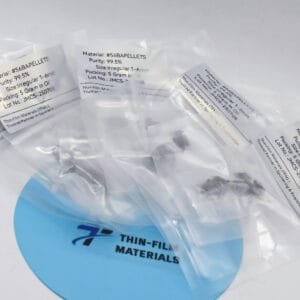| aterial Type | Cadmium Arsenic |
| Symbol | Cd2As2 |
| Melting Point (°C) | 721 |
| Theoretical Density (g/cc) | 6.21 |
| Z Ratio | |
| E-Beam | |
| E-Beam Crucible Liner Material | |
| Temp. (°C) for Given Vap. Press. (Torr) | |
| Comments |
Cadmium Arsenic Pellet Evaporation Material
TFM offers high-purity Cadmium Arsenic Pellet Evaporation Material, a critical compound for thin-film deposition, optoelectronics, and semiconductor applications. Known for its excellent optical and electrical properties, this material is widely used in photovoltaic cells, infrared detectors, and advanced electronic devices.
Key Features and Advantages
High Purity (99.99% – 99.999%) – Ensures optimal performance in thin-film deposition and semiconductor applications.
Excellent Optical & Electrical Properties – Provides superior light absorption and conductivity, ideal for solar cells and optoelectronic applications.
Optimized for Thin-Film Deposition – Compatible with thermal evaporation and E-beam evaporation techniques.
Stable & Uniform Coating – Ensures consistent film quality, essential for high-efficiency devices.
Customizable Composition – The Cd/As ratio can be adjusted for specific industrial and research requirements.
Applications
Thin-Film Solar Cells – Used in photovoltaic applications to enhance solar energy conversion efficiency.
Optoelectronic Devices – Ideal for infrared detectors, photodetectors, and LEDs.
Semiconductor Research – Supports material science studies for next-generation electronic devices.
Thin-Film Transistors & Sensors – Applied in wearable electronics and transparent electronics.
Industry Impact
TFM’s Cadmium Arsenic Pellet Evaporation Material is a high-performance material with exceptional optical and electrical properties, making it ideal for photovoltaics, optoelectronics, and advanced semiconductor applications. Its high purity and optimized deposition characteristics ensure superior film quality, driving innovations in renewable energy and advanced electronics.


 MSDS File
MSDS File



Reviews
There are no reviews yet.